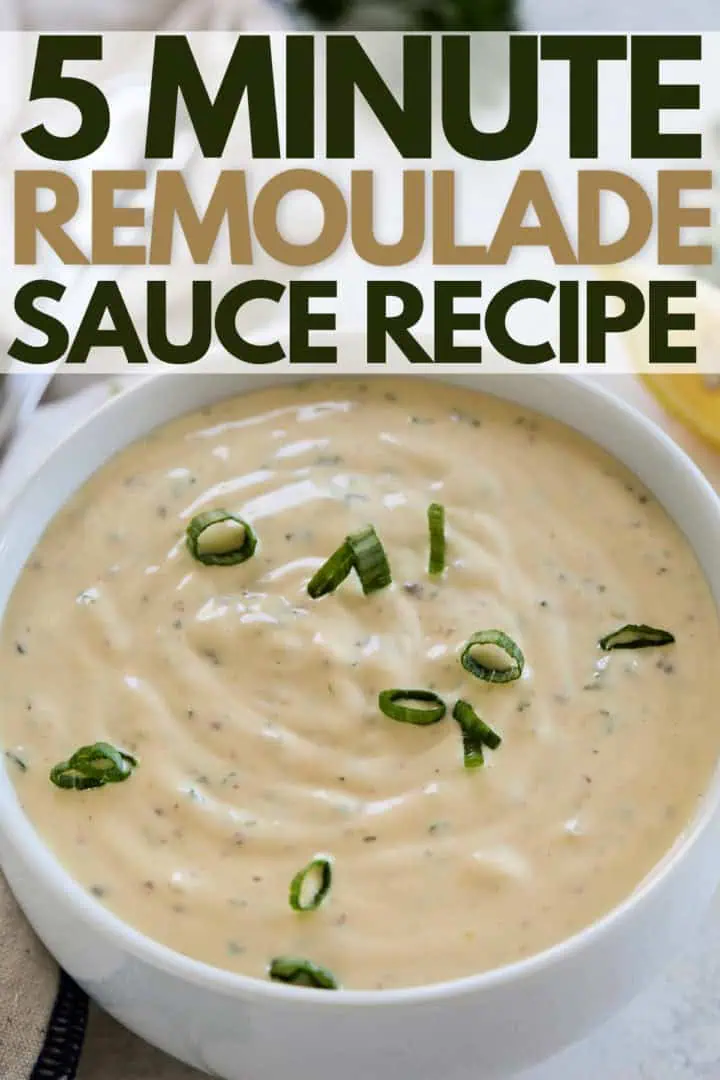Remoulade Sauce
Try our quick and easy remoulade sauce recipe for a creamy, tangy addition to any meal. It’s perfect for seafood, sandwiches, and salads, this versatile sauce is sure to impress.
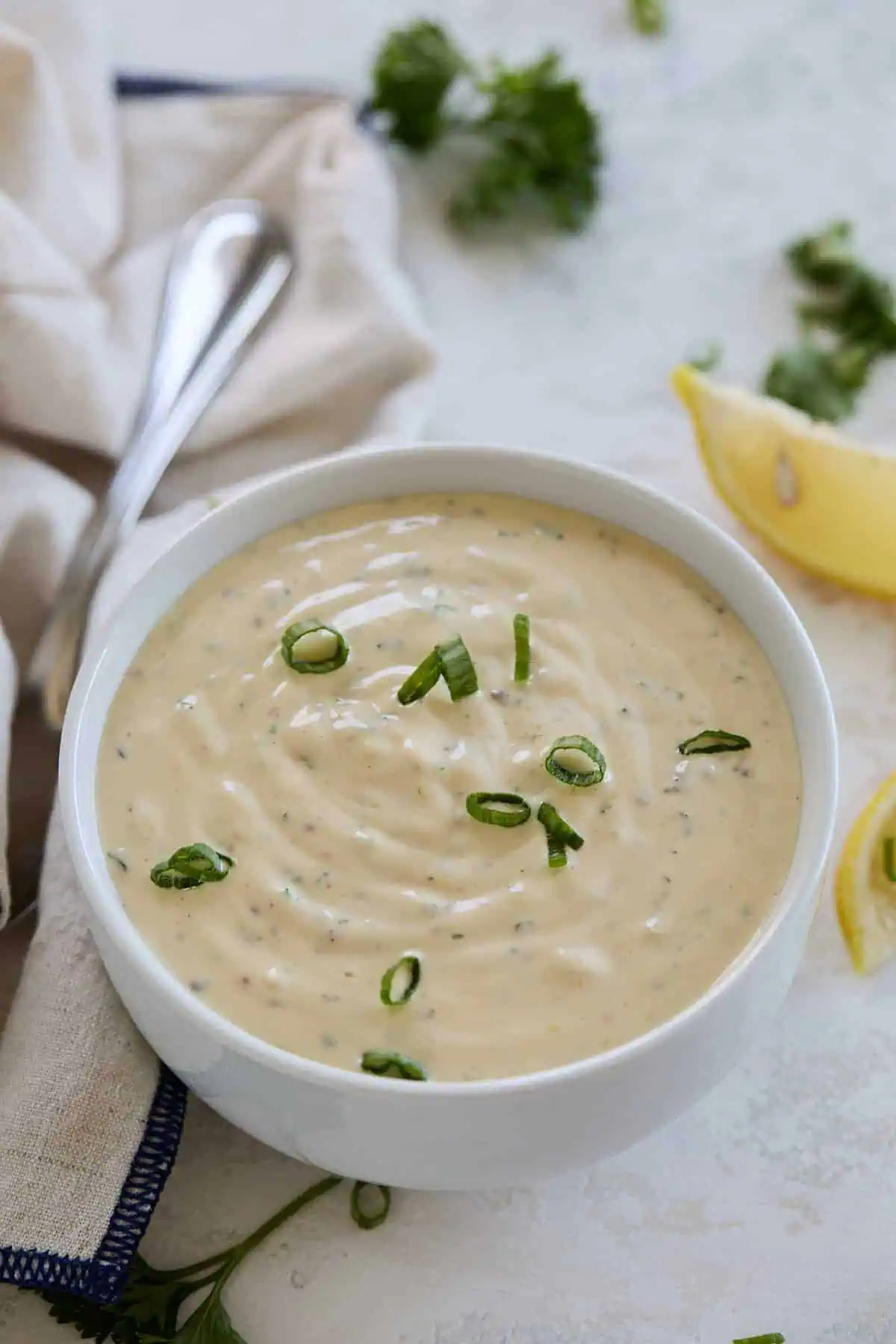
Remoulade sauce is a versatile and flavorful condiment that adds a delicious tang to a variety of dishes. It can make all the difference in your next seafood dish.
Personally, I like to use ours on crab cake sandwiches and tacos. Similar to our fish taco sauce and southern coleslaw dressing, this creamy dipping sauce uses a mayonnaise base combined with the zest of mustard, capers, and lemon juice.
Our recipe is simple, classic, and can be whipped up in no time, making it an essential addition to your kitchen.
What ingredients are in remoulade sauce?
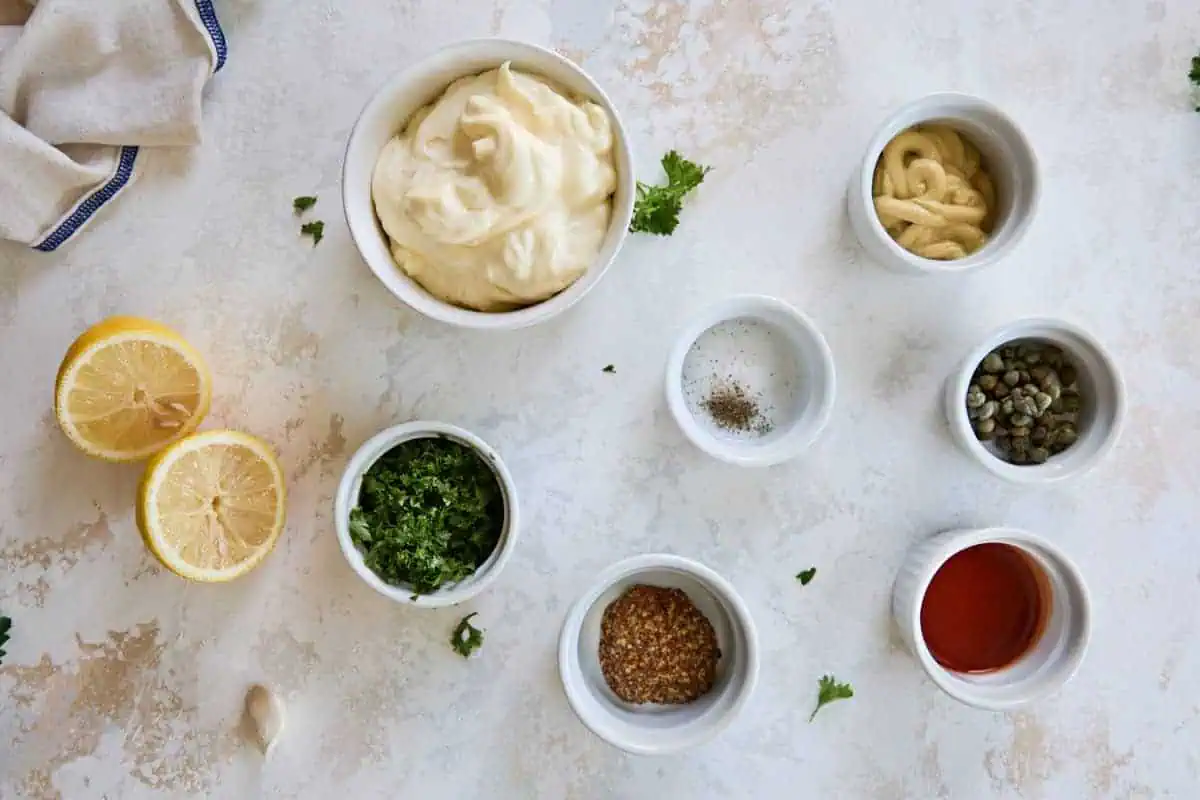
- Mayonnaise: The creamy base of the sauce that provides richness and a smooth texture.
- Dijon Mustard: Adds a sharp, tangy flavor that enhances the overall taste of the sauce.
- Whole Grain Mustard: Provides texture and a slightly milder mustard flavor, adding depth to the sauce.
- Capers: These add a briny, tangy element that balances the richness of the mayonnaise.
- Lemon Juice: Brings a fresh, acidic brightness that cuts through the creaminess and adds a zesty flavor.
- Hot Sauce: Adds a touch of heat and additional depth of flavor. Adjust to taste for desired spiciness.
- Parsley: Adds a fresh, herbaceous note and a pop of color to the sauce.
- Garlic: Infuses the sauce with a subtle, pungent flavor that enhances the overall taste.
- Salt and Pepper: Essential for balancing and enhancing all the flavors in the sauce.
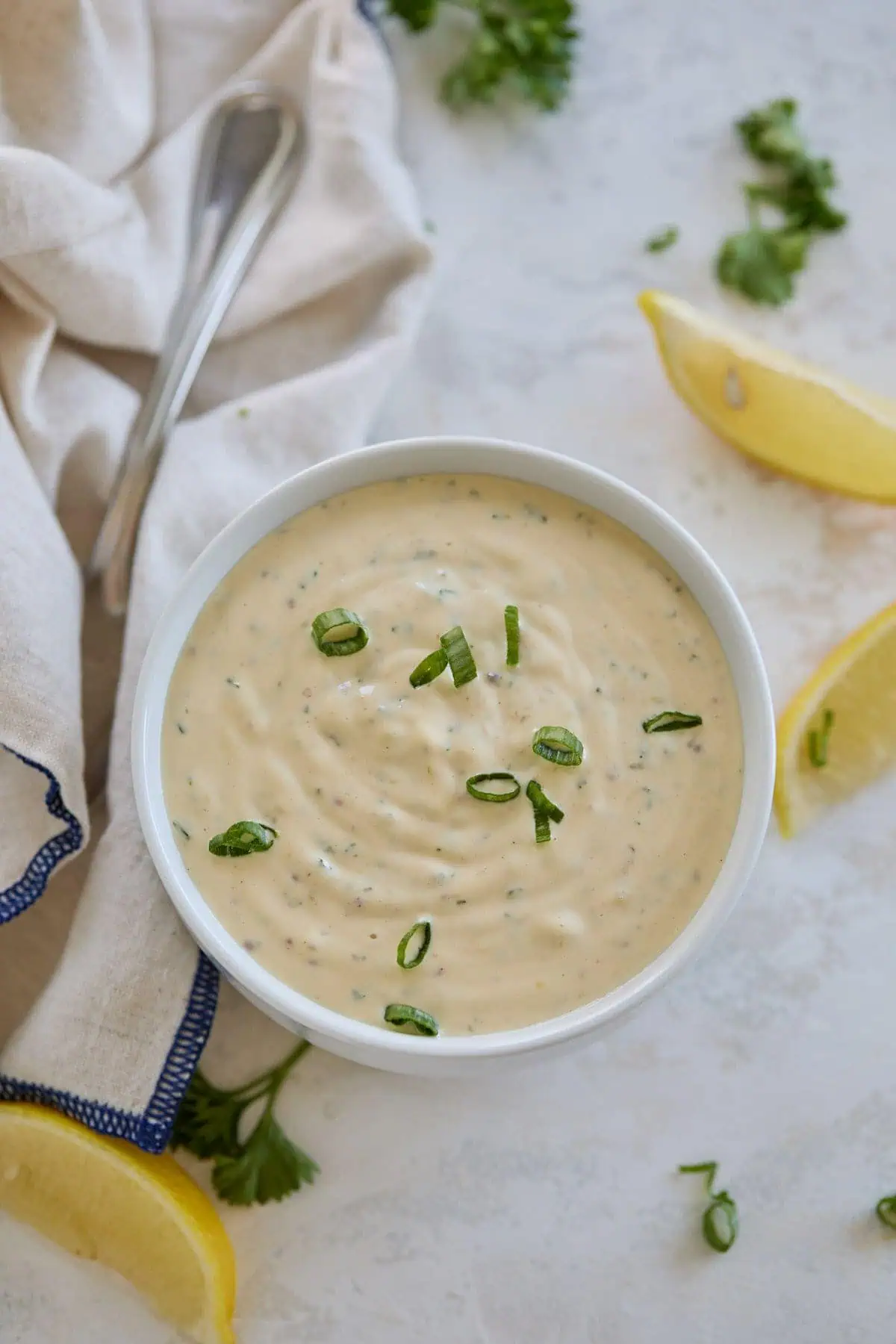
Types of Remoulade Sauces
Classic French Remoulade: The traditional French version typically includes mayonnaise, Dijon mustard, capers, chopped cornichons (pickles), herbs like tarragon and parsley, and sometimes anchovy paste. It’s often served with cold meats, seafood, and as a dressing for salads.
Louisiana Remoulade: This version is a staple in Creole and Cajun cuisine, known for its spicy kick. It usually includes mayonnaise, Creole mustard, horseradish, paprika, hot sauce, and various spices. It’s commonly served with seafood, especially shrimp and crab cakes.
Danish Remoulade: Popular in Denmark, this version includes mayonnaise, mustard, chopped pickles, capers, onions, and sometimes curry powder. It’s often used as a condiment for open-faced sandwiches, fried fish, and hot dogs.
German Remoulade: Similar to the Danish style, German remoulade often includes mayonnaise, mustard, chopped pickles, capers, onions, and herbs. It’s typically served with fish, cold meats, and as a sandwich spread.
Swedish Remoulade: In Sweden, remoulade sauce often features mayonnaise, curry powder, chopped pickles, capers, and sometimes anchovies. It’s commonly paired with fried fish, seafood dishes, and even roast beef.
Belgian Remoulade: This version is similar to the classic French remoulade but often includes additional ingredients like chopped boiled eggs and vinegar. It’s frequently served with fries, cold cuts, and seafood.
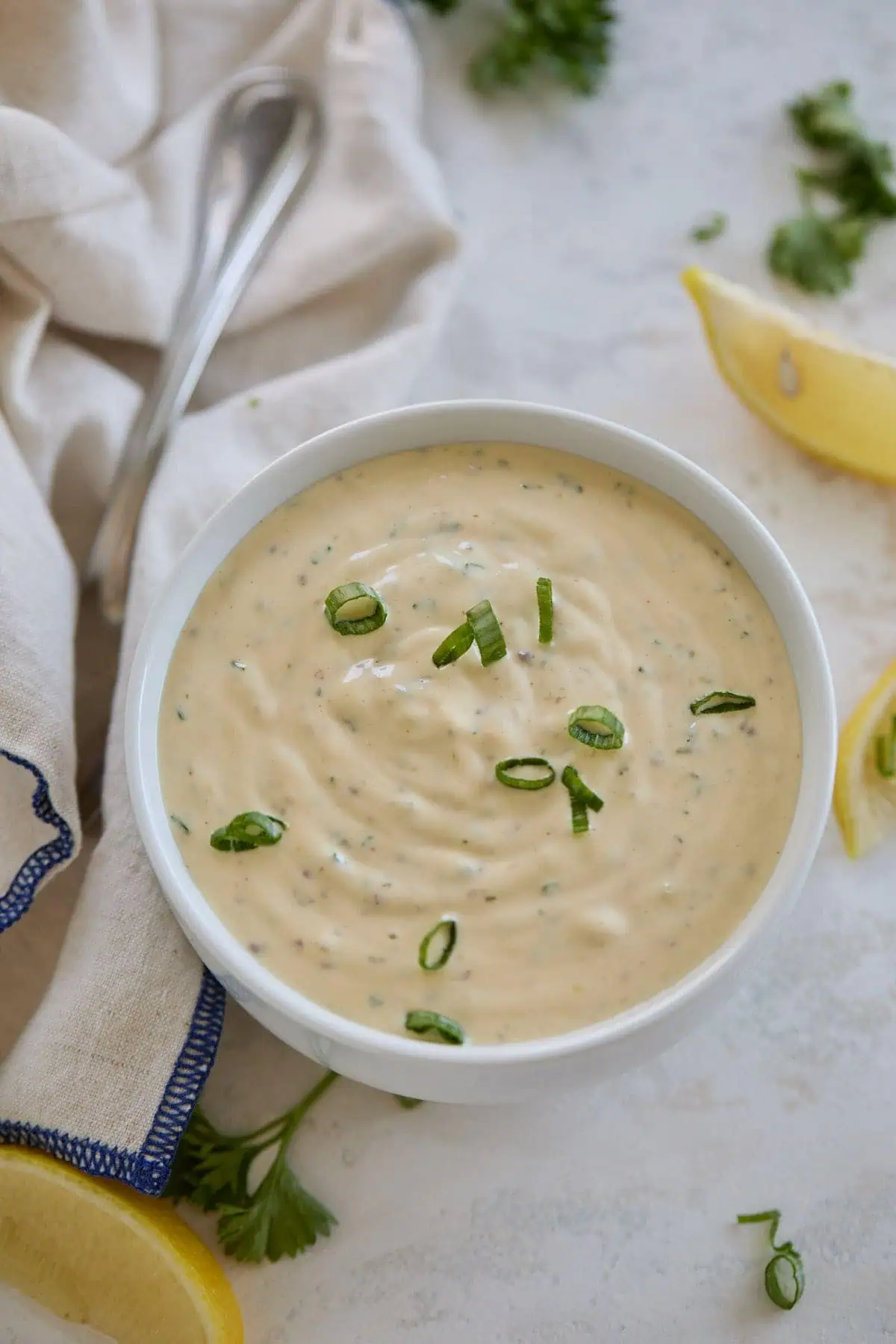
What Type of Remoulade Sauce is This Recipe?
Our recipe is closest to a Louisiana Remoulade. This version is a staple in Creole and Cajun cuisine, known for its spicy kick.
It features a mayonnaise base, mustard, capers, lemon juice, hot sauce, garlic, and parsley, which are typical ingredients in a Louisiana-style remoulade.
This creamy and tangy sauce is perfect for seafood, especially shrimp and crab cakes, and adds a delicious flavor to sandwiches and salads.
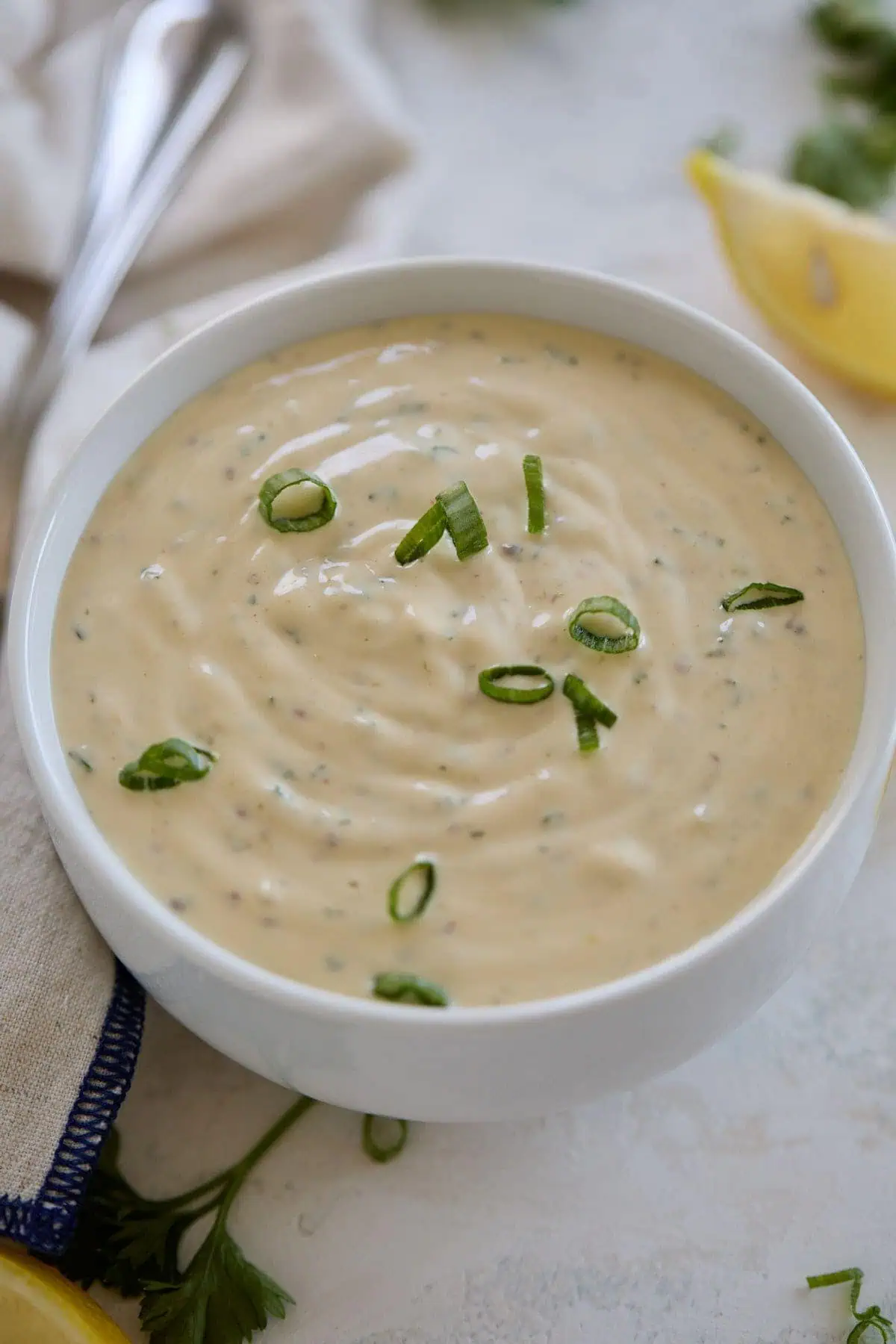
Serving Suggestions
Our homemade remoulade sauce pairs wonderfully with crab cakes, shrimp po’ boys, or as a tangy dip for home fries and vegetables.
Can I use dried parsley instead of fresh?
Fresh parsley provides the best flavor, but if you need to use dried, start with 1 teaspoon and adjust to taste.
Storage
This sauce can be stored in an airtight container in the refrigerator for up to one week.
Other Condiments to Try
Like This Recipe?
We’d love it if you would leave a 5 Star ⭐️⭐️⭐️⭐️⭐️ rating below.
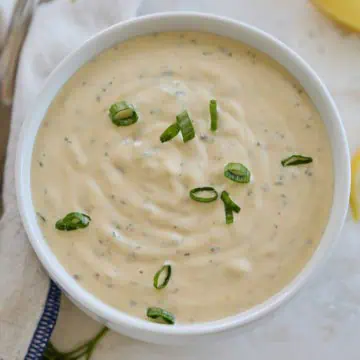
Ingredients
- 1 cup (240 g) mayonnaise
- 1 tablespoon (15 ml) Dijon mustard
- 2 teaspoons (10 ml) whole grain mustard
- 1 teaspoon (5 g) capers, finely chopped
- 1 tablespoon (15 ml) fresh lemon juice
- 1 teaspoon (5 ml) hot sauce
- 2 tablespoons (10 g) finely chopped parsley
- 1 (1-2 g) small garlic clove, minced
- Salt and pepper to taste
Instructions
- In a medium bowl, mix together the mayonnaise, Dijon mustard, whole grain mustard, capers, lemon juice, hot sauce, parsley, and garlic.1 cup (240 g) mayonnaise1 tablespoon (15 ml) Dijon mustard2 teaspoons (10 ml) whole grain mustard1 teaspoon (5 g) capers1 tablespoon (15 ml) fresh lemon juice1 teaspoon (5 ml) hot sauce2 tablespoons (10 g) finely chopped parsley1 (1-2 g) small garlic clove
- Add salt and pepper, adjusting the seasoning as needed.
- Cover the bowl and refrigerate the sauce for at least 1 hour to allow the flavors to meld together.
- Serve chilled as a dipping sauce, spread, or dressing for seafood, sandwiches, or salads.
Notes
- The calories listed are an approximation based on the ingredients and a serving size of about 2 tablespoons of the finished sauce.
- See our nutrition disclaimer.
- This sauce can be both tangy and salty to some because of the capers and lemon juice. It’s best to start with less and add more if needed.

